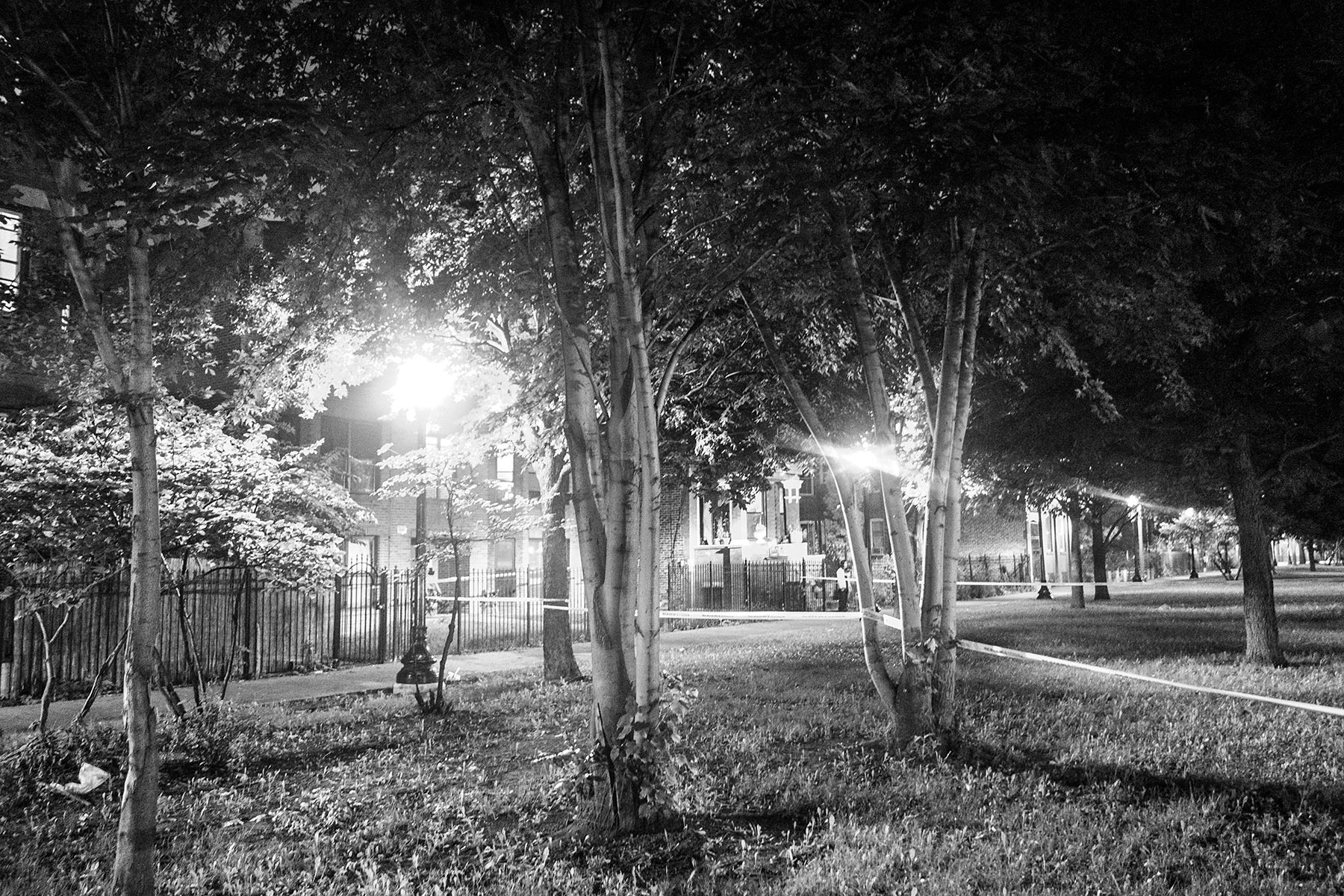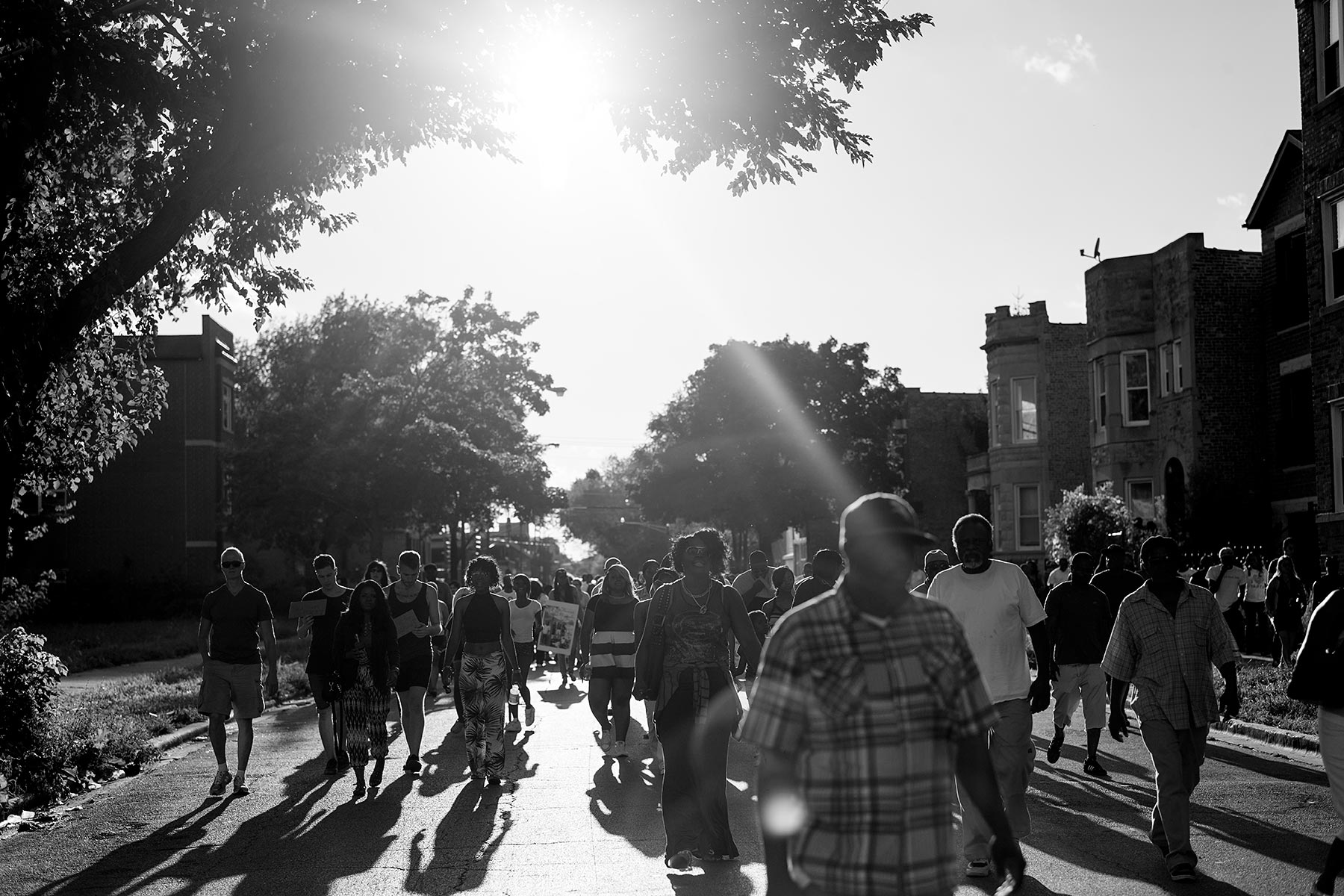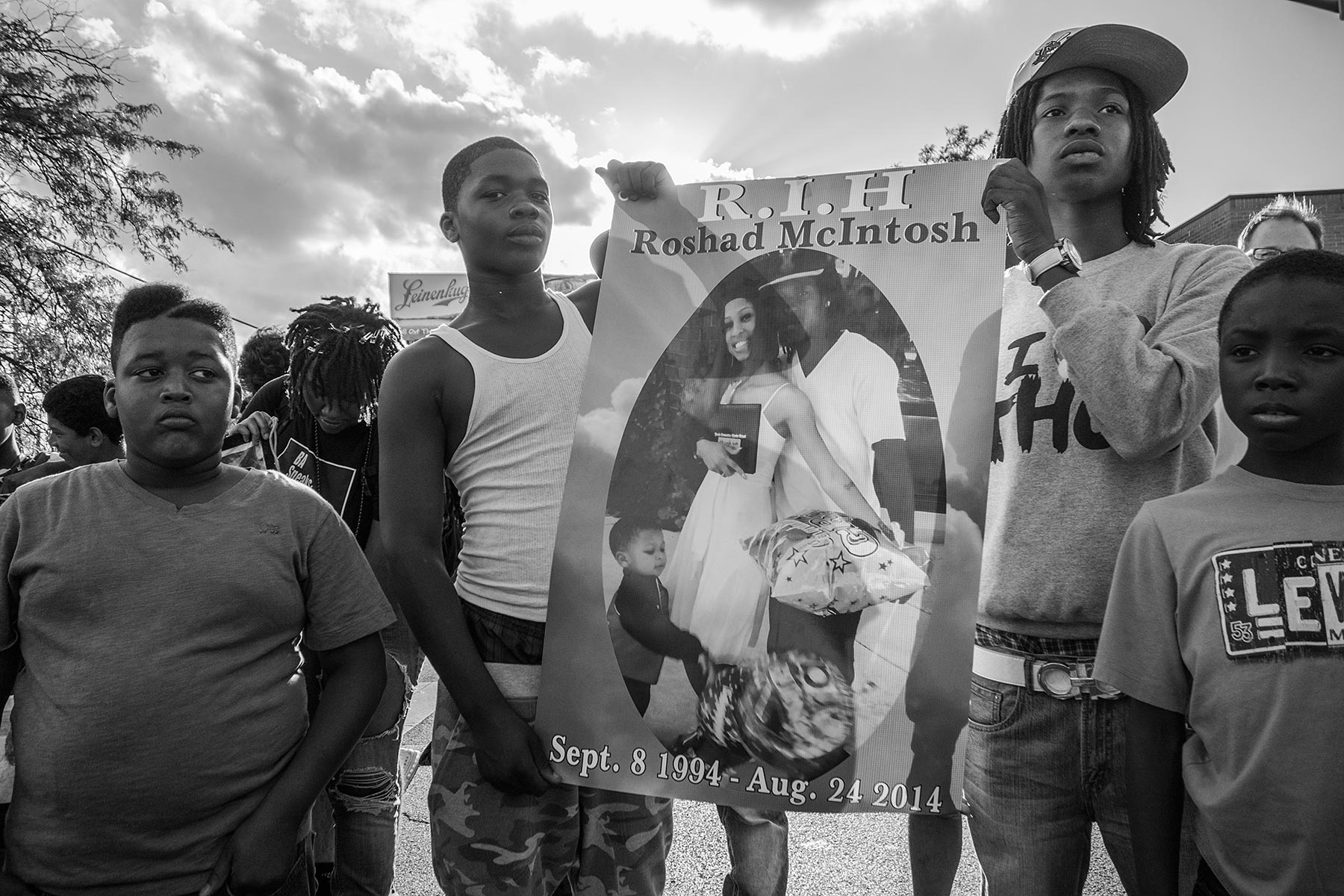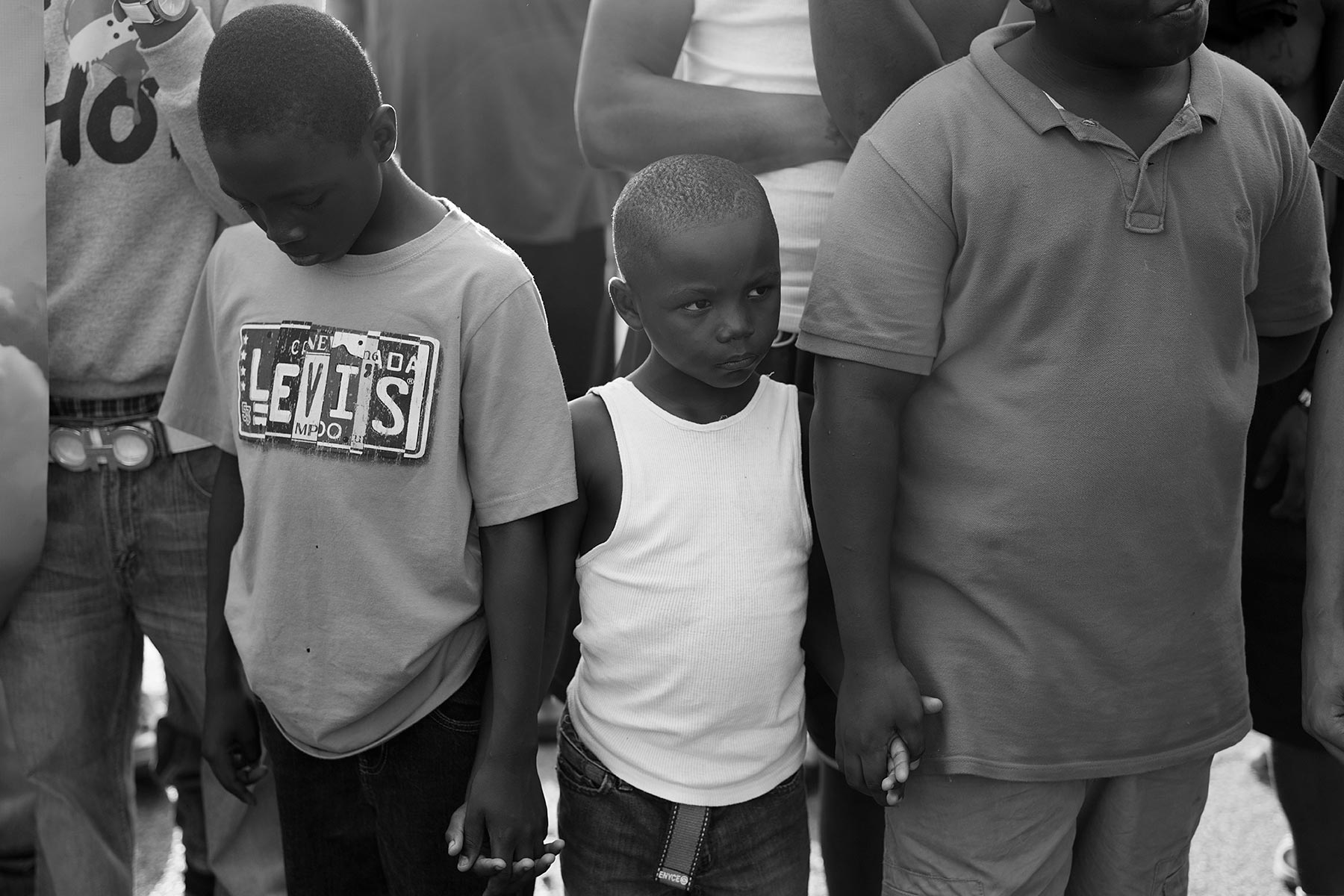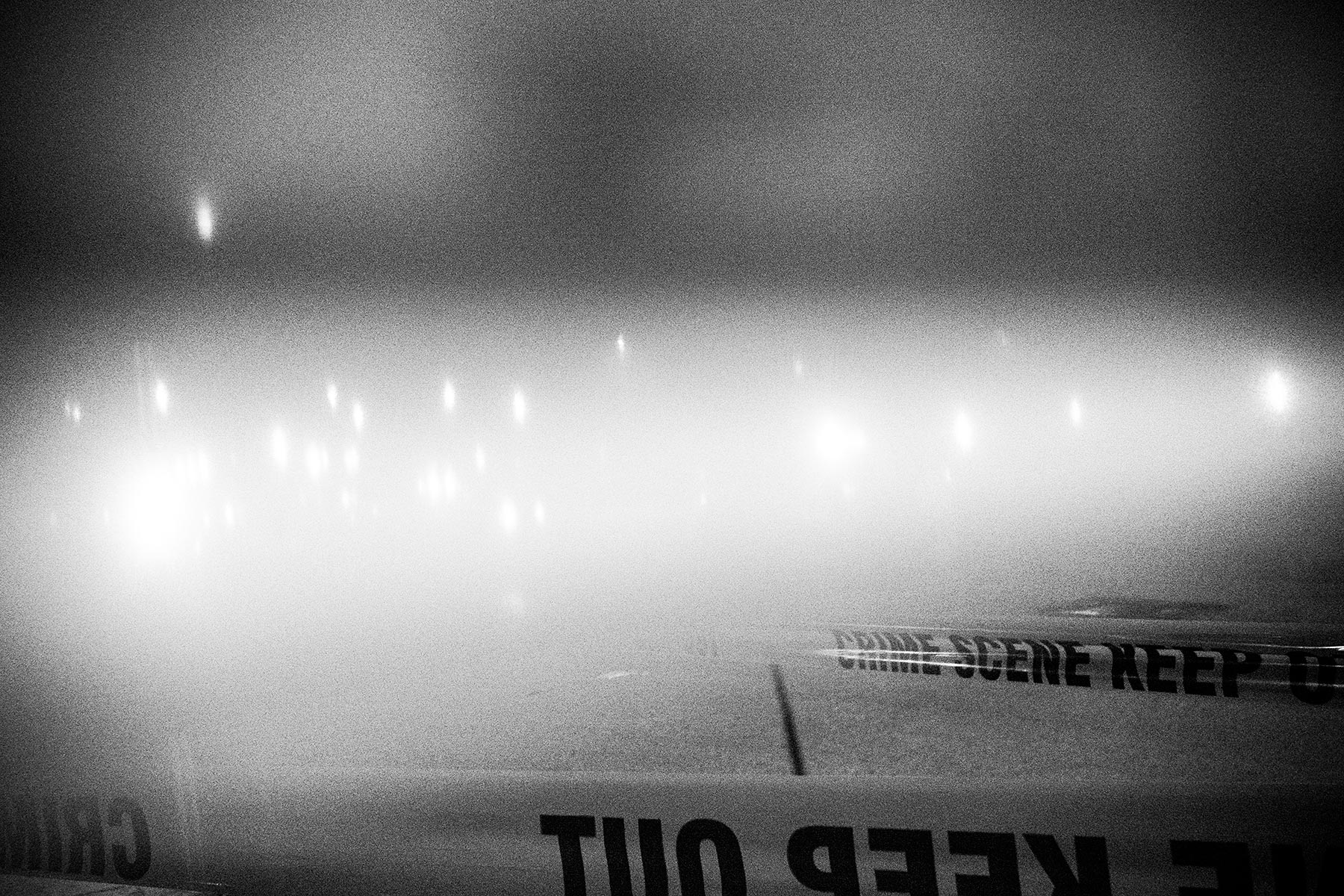
30 shootings in 3 days
A typical Chicago weekend's violence leaves three dead
Photos by Carlos Javier Ortiz for Al Jazeera America
Edited by Matt Williams, Christopher Shay, Mark Rykoff
Published on Wednesday, November 19, 2014
Gun violence is a stubborn blight in Chicago, more so than in other parts of the United States. While the national rate of violent crime has fallen remarkably over the last decade, it has proved difficult to drive down in America’s second city. The city’s black and Hispanic communities are the hardest hit. Young people, often children, crop up among the murdered and wounded.
The number of homicides in Chicago usually hovers between 300 and 400 a year. Most of the victims are shot, although beatings and stabbings contribute to the figure. As of Nov. 9, there have been 347 murders in the city this year, down from 364 at the same point last year. There have been 1,792 shooting incidents, up from 1,642 at the same time last year. The Chicago Police Department points to the drop in murders as a victory, but that number conceals the hundreds of additional people whose lives are irrevocably damaged by gun violence. Some of those wounded by bullets live by the gun themselves and brazenly wear their scars with pride. Others are bystanders who walk away shaken but without permanent injury. Those less fortunate are paralyzed and might never walk again.
Documentary photographer and Chicago native Carlos Ortiz, who has photographed and reported on gun and gang violence there for the last eight years, cites poverty, racial inequality and the availability of guns on the city’s streets as factors behind the high murder rate. He published a collection of his work, ”We All We Got,” in September.
He accompanied Al Jazeera America on assignment in Chicago over Labor Day weekend, visiting victims, their families, youths at danger of falling into crime and former gangbangers determined to prevent them from doing so.
“Thirty people this past week got shot. Four died,” Ortiz said on Nov. 9th. He says he believes that the problem won’t go away unless citizens put constant pressure on public officials to do something.
For him, the recent drop in murders is thanks not to a drop in gun violence but to fast response times by emergency services and advances in medical care.
For many survivors, Chicago lacks continuing care desperately needed to address the mental and physical trauma of gun violence, he said.
The statistical drop in killings does nothing to diminish the pain for grieving loved ones. In August a 9-year-old boy, Antonio Smith, lost his life to gun violence, allegedly after a 19-year-old gang member took the child to be a lookout signaling to rivals, the Tribune reported.
The child was shot six times, twice in the chest.
While many other Chicago youths have lost their lives to stray bullets, the murder stands out because the alleged shooter meant to kill the boy, firing a barrage of bullets into Antonio just moments after he had run out of his house, angry that his mother wouldn’t give him ice cream, according to reports.
“This is something that’s not going to go away until we invest in these communities,” Ortiz said, stressing the importance of prekindergarten classes and funding for the arts to help give the next generation a better chance.
“Kids need places not just to go and play but places to go and work, places to be able to free their minds,” he said. “The city is cutting all these art education programs. I saw it in the ’90s, when I went to Chicago public schools. They were trying to cut off all those programs then. We really loved this stuff. This is the stuff we need.”
Some murder scenes in Chicago attract gawkers; others don’t. It can resemble a tragic circus at times, with police and emergency workers playing ringmaster for a milling crowd of neighbors, passersby and sometimes journalists. Other times, they happen in quiet spaces, sleepy suburbs, proving little more than a brief inconvenience for those not directly involved.
5600 S. Damen Avenue
On Aug. 29, Johnny White, 36, became the victim of a drive-by shooting, with bullets fired into his body, leg and head.
The murder scene attracted a crowd, because it happened just a few yards from two gas stations and along a major street, Damen Avenue, near where it crosses Garfield Boulevard, a tree-lined east-west artery.
Young men watched from the gas station on the west side of the street while police went about their work, checking if surveillance cameras caught the killing.
Officers blocked off the entirety of Damen Avenue, the north-south thoroughfare, where the shooter or shooters scattered dozens of spent shells across the street during the incident. Police dutifully placed yellow plastic markers, folded to stand, next to each one.
A man watching the events from his stoop told how such shooting were now commonplace in the area.
“It goes on so much, you get numb to it,” he said. “The chances of you getting shot are better than hitting the lottery … The motherfucking cycle of revenge never ends.”
On Aug 28, a day before White’s slaying in Chicago’s South Side, there was another shooting in West Side. Again, the attacker shot from a car, hitting a 24-year-old woman in the leg and chest. She was sitting on a porch, the Sun-Times reported.
Unlike the Damen Avenue murder, this shooting happened next to some houses near a clutch of trees. Police will use almost anything to secure crime scene tape, and this time the trees were the most reasonable option.
The event brought out a half a dozen police cars, and cops scoured a patch of grass where the crime occurred.
But there was no crowd, and only one stray citizen stood near the scene. He didn’t want to talk. Reporters were also fewer in number. Officers on the scene said they believed the victim would live, and in a city where gun crime is rife, a nonfatal shooting is often deemed less newsworthy.
2050 W. 59th St.
On the afternoon of Aug. 9, Antonio Smith, ran out of his home in Grand Crossing, reportedly angry because his mother denied him ice cream. Minutes later, he was shot dead.
His funeral on Aug. 30 drew hundreds of mourners to the Evening Star Baptist Church on a bright, sunny, breezy morning.
Moments like these force Chicagoans to reflect on the city’s shooting epidemic. Not many victims of Chicago violence are as young as Antonio was. But young lives being snuffed out in the violence are not uncommon.
Ronald Holt, whose 16-year-old son, Blair, died on May 10, 2007, when a teenage gunman shot wildly at a rival on a city bus, told reporters after Antonio’s service that he felt the pastor’s eulogy struck home. The minister emphasized the responsibility of parents to protect their kids from falling for the allure of gang life.
“I’m glad a pastor had the nerve to call out some parents who have lost their kids to the streets, who did not good a job of raising them correctly,” Holt said. Since his son’s death, Holt, a police officer, has become an anti-violence activist, and he holds up what happened to his son as a tragic example of the problem.
“He was not in the streets or in a gang or whatever, but the individual who took his life was cut from that corrupted cloth of gang membership, of street life and the lack of parental involvement.”
Holt reiterated a message from the pastor, who reminded his flock that the “Lord says vengeance is mine,” meaning justice is God’s to deliver for Smith's murder.
Blair’s killer was also 16 when he committed the crime. He received a prison sentence of 100 years, according to Chicago magazine.
9525 S. Oglesby Ave.
Detectives directed their flashlights at a pool of blood in the driveway of a modest house on a dark, quiet street in a suburban-seeming neighborhood of cul-de-sacs and roundabouts.
A man, 51, and a woman, 27, had both been shot around 9 p.m. that night. The woman took a bullet to her arm, and the man arrived walk-in to Roseland Community Hospital with a through-and-through gunshot wound to his chest, according to information available at the time.
It had all the hallmarks of a domestic dispute, detectives told local reporters, but by the following day, authorities still had no idea who fired the gun or why, the Sun-Times reported.
There wasn’t a crowd of neighbors or gawkers, but the crime scene proved an inconvenience to those trying to get past. Robbin Minor, 55, sat in the driver’s seat of a sedan as she waited for police to let her through the blocked-off street. The 55-year-old said boredom, drugs and alcohol fueled gun violence in Chicago.
11th Police District, 3164 W. Harrison St.
The marchers started gathering at 4 p.m. Small in number at first, they swelled to hundreds by the time they were ready to set off down Harrison Street to the 11th District police station. The protest was called to demand justice in the death of a black teenager and the name of the cop who shot him.
Roshad McIntosh, 18, died after running from police the week before. He died in a vacant, grassy lot near the corner of Polk Street and California. It was from that point that marchers began their three-block walk.
A mix of community activists, organizers and concerned citizens participated in the September rally to voice anger over what they saw as a deep injustice. They chanted “Justice for Roshad!” and “Name the killer cop!” along the route.
Police maintain McIntosh had a gun and was pointing it at officers, who had no choice but to fire in self-defense.
“He had his hands up. What do you all have Tasers for that shoot 50 feet, and you keep going for your guns? Every black man ain’t in on all that bullshit,” said one marcher, neighbor Jay Wilkerson, 25, who said he was near the scene at the time of the shooting. “They moved everybody off the block, just so we couldn’t see.”
Witnesses insist McIntosh didn’t have a gun. The Chicago march came just two weeks after street clashes between heavily armed police and protesters in Ferguson, Missouri, where a similar, albeit much larger drama was playing out over the killing of unarmed black teenager Michael Brown, also 18.
The protest endured a brief schism when, returning to where the protest started, one of the protesters started shouting “Fuck the police!”
“We ain’t doing that!” Leonard Alexander, a community activist, 47, yelled at the young white man, who later declined to speak to Al Jazeera or provide his name.
“This is our neighborhood!” a middle-aged female protest leader shouted. Some expressed displeasure that swearing was happening in front of children.
Trey, 24, who said he didn’t want to give his last name to protect his privacy, said that behind the rift was a belief that white protesters at the march were not as invested in the area the way black people are.
“We don’t want to say F the police because this is our neighborhood,” he explained.
“He [the white protester] was, ‘Naw, you gotta say that.’ I explained it to him — ‘You all gonna leave. They [the police] are gonna be pulling guns on us when you all leave. They hear this shit,’” Trey said.
A few minutes later, one of the white protesters spoke to Cynthia Lane, McIntosh’s tearful mother, apologizing for the swearing. She nodded. They hugged.
“They not going to be here after this day is done. We need to hold our own neighborhood down,” Alexander said to the crowd over a megaphone. “We need to start our own revolution ’cause that’s what we’re trying to do.”







